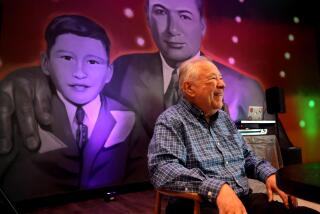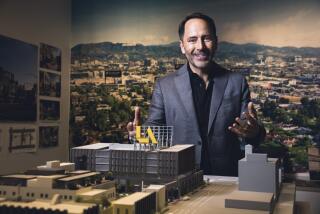Issue: Movie Theaters
Central city movie-goers usually have to make their way to the suburbs to find cineplexes, which are often boons to nearby businesses. What could be done to have some built in the community?
* Michael Edwards, Crenshaw, acting instructor The problem is that there’s a perceived difference between black and white audiences in movie theaters. Whites are afraid of black audience response in certain movies, like talking at the screen, commenting on the action--verbal responses. That fear is what surfaced in movies like “New Jack City” and “House Party.” Whites thought, “This is how black people react to movies--they riot.” That fear is what stops people from investing in the area. The incidents of rioting happened under a magnifying glass. Even though it happened only a few times, that’s all investors need to back out of a deal to build theaters.
* Felecia Bell, Central Los Angeles , actress
It’s an issue of economics. In the past, people of color were not considered the prime movie-going public. You didn’t have people going into urban areas getting accurate information on the movie-going habits of the people who live there. There was an assumption that they didn’t go to theaters, which was an inaccurate assumption. Nowadays, it’s still an issue of fiscal responsibility. Investors are going to build in areas that they think will turn a profit quickly. Unfortunately, those targeted areas haven’t been populated primarily by people of color. And I don’t know if people would necessarily go to movie theaters built in their community. Part of the attraction of going to the movies could be going outside of the area you live in, seeing something different for a couple of hours.
* Allen DuRant, General contractor, South Los Angeles One of the major reasons why people don’t come into this area is security problems with gangs and drug dealers. Even if you have armed guards and a controlled flow of people in a movie theater, you still get no respect from the audience in terms of people being quiet and respectful of each other. In suburban theaters, you feel safer because there’s more of a mixed crowd generally. We should all be able to get along, but unfortunately that’s not always the case. I go to the Baldwin Theater occasionally, and I’ve never experienced anything bad. I work all over the city and I feel safe anywhere. It’s great that Magic Johnson is putting up money to do the complex in the Crenshaw mall, but I wonder if that type of investment will continue. There are a lot of places that need theaters, but because of bad press, people aren’t willing to build there. The media hype over certain incidents at movie houses has been blown way out of proportion and hurt our chances of getting theaters. That has to be addressed.
* Luis Rojas, Elementary school teacher, Boyle Heights Most people who live on the Eastside have to go outside the area to see a movie. Investors don’t go into areas like the Eastside because a small percentage of people who live in the community don’t appreciate the services that could be available to them, don’t take pride in them. Edwards Cinemas just built theaters in Alhambra, which are really nice. But they’re vandalized already--the windows are scratched, the bathrooms are messed up. It’s discouraging from a business standpoint. You can’t keep replacing and cleaning things every week. Even though people from the Eastside are going to movies, the poverty is so pervasive that people have priorities other than movie theaters. The priority is to put food on table. Making space for entertainment is not nearly as important as building affordable housing. Also, the Hispanic population is so widespread and Spanish is so widely spoken, English-language movies wouldn’t be very profitable.
More to Read
The biggest entertainment stories
Get our big stories about Hollywood, film, television, music, arts, culture and more right in your inbox as soon as they publish.
You may occasionally receive promotional content from the Los Angeles Times.










